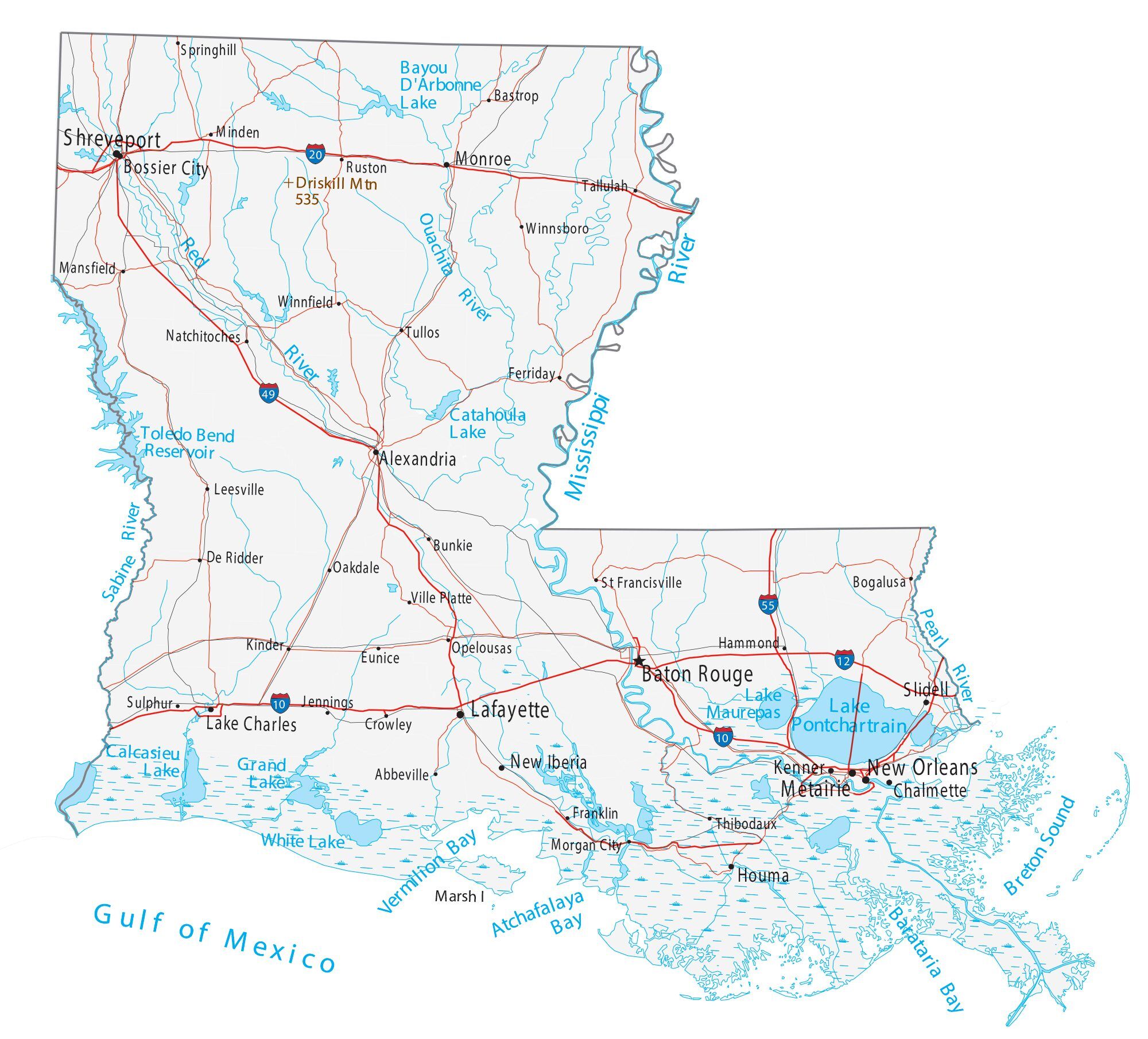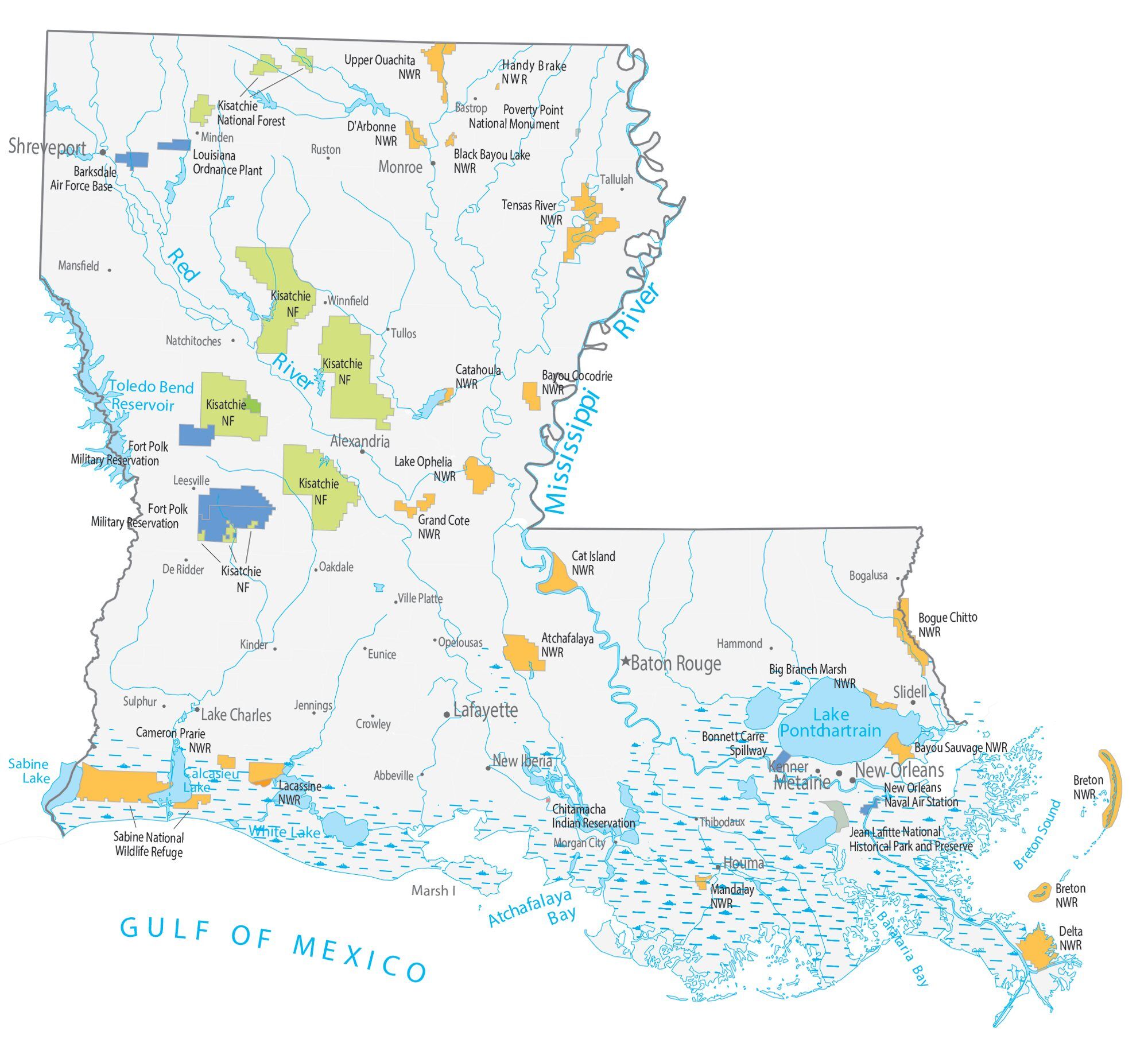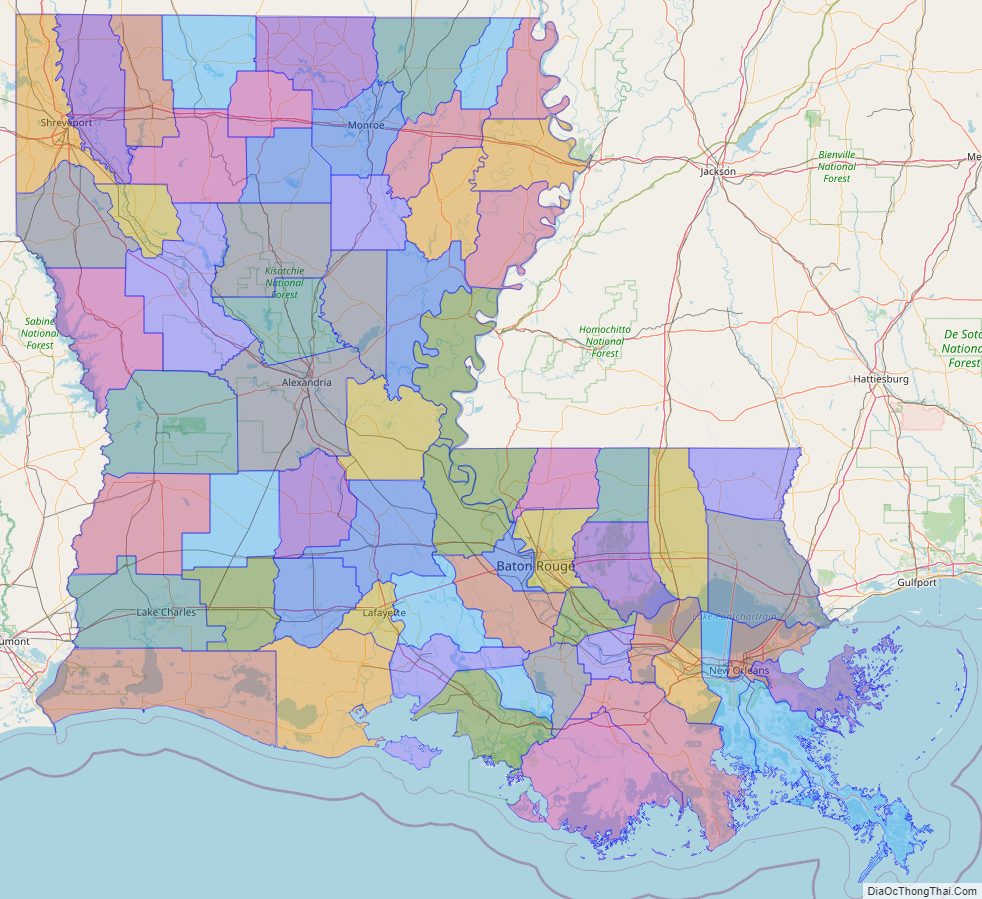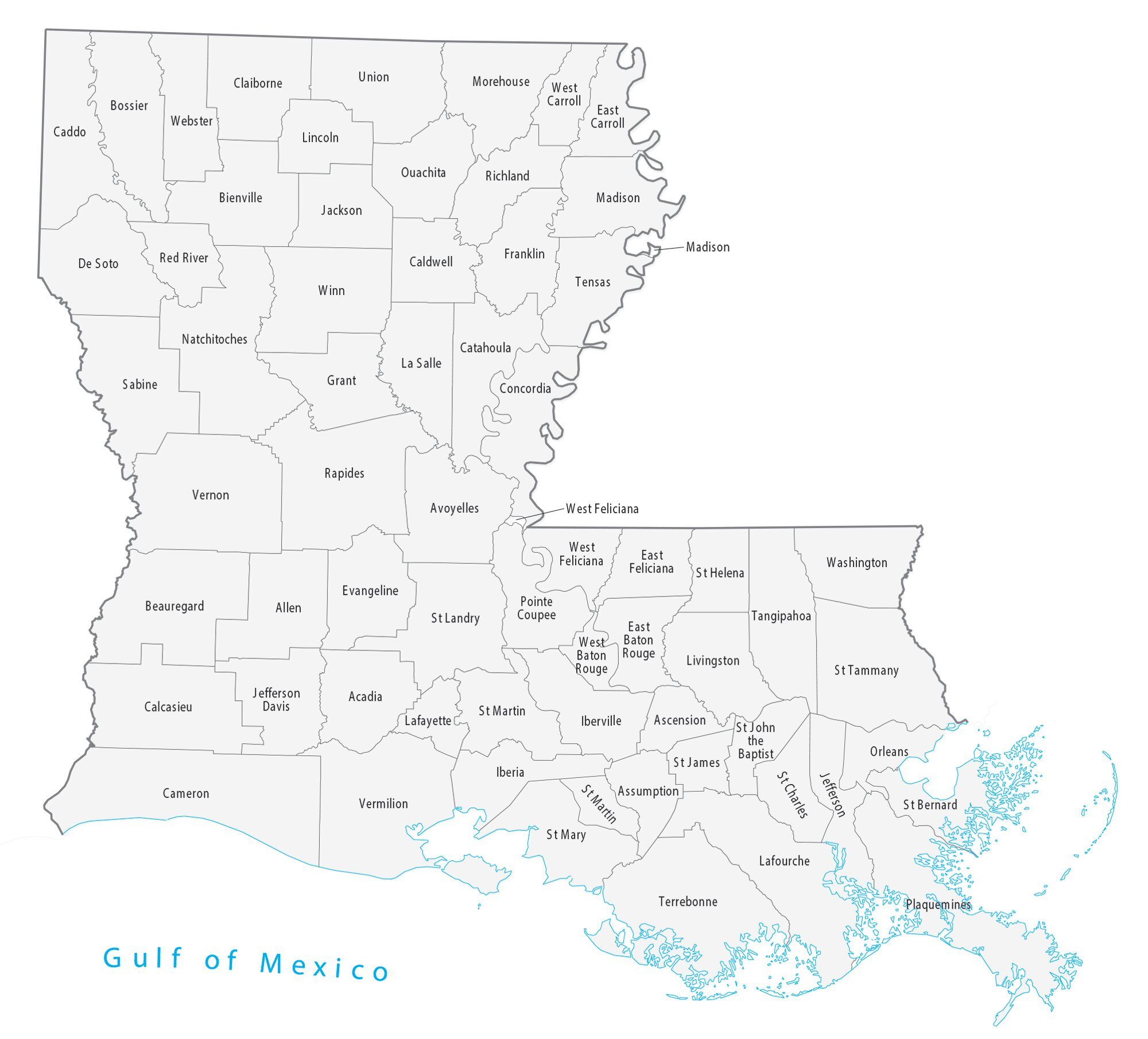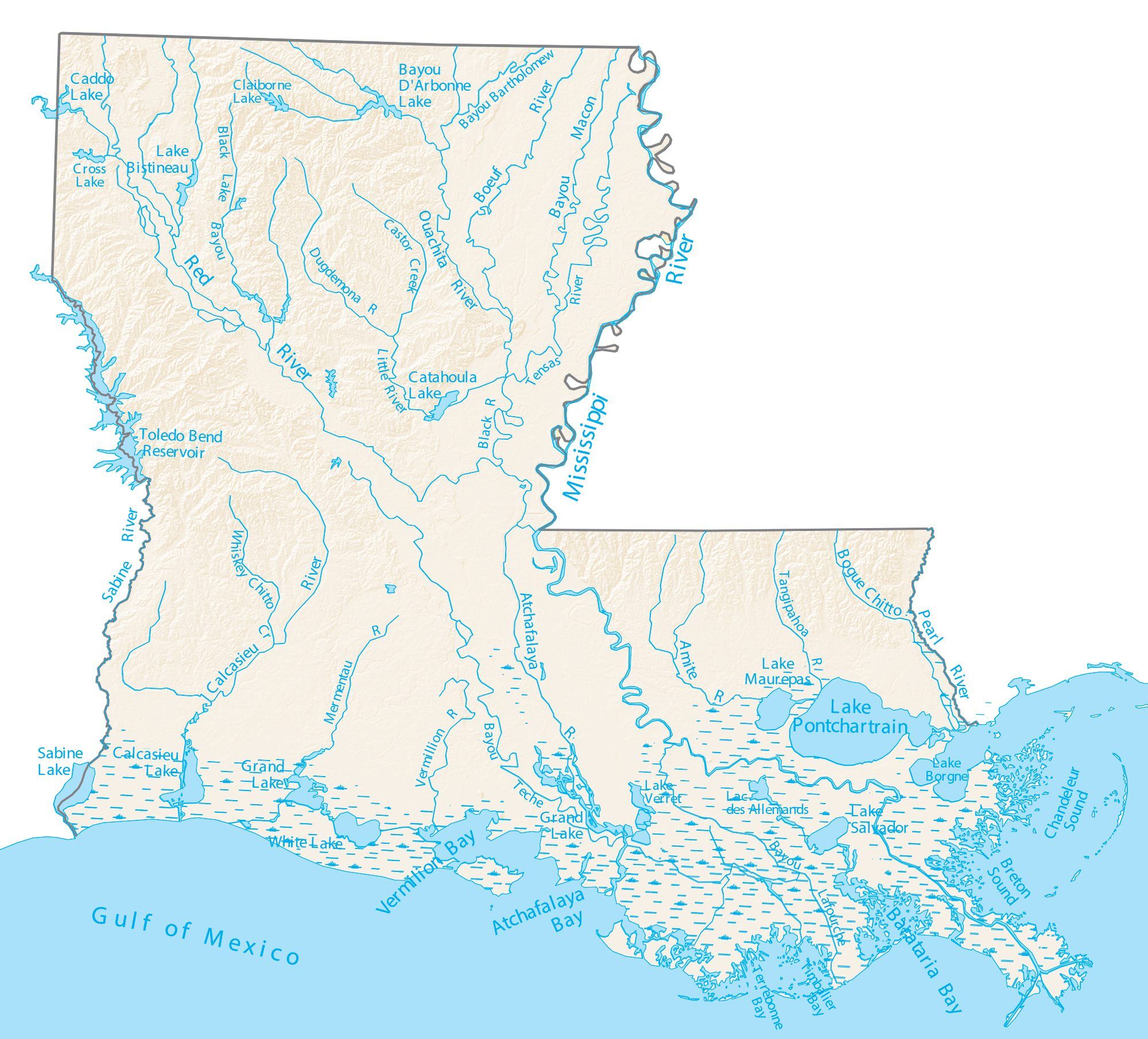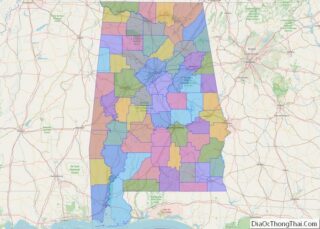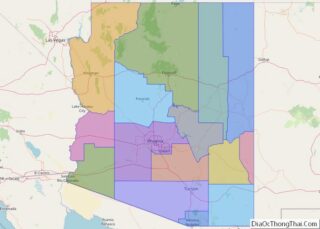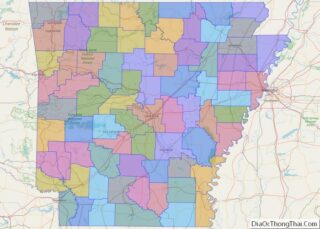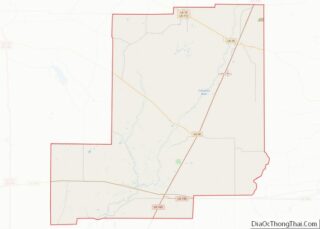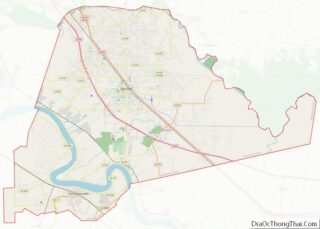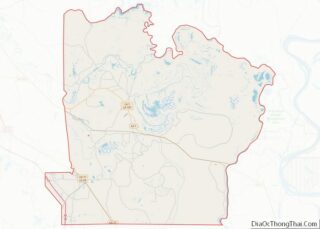Louisiana (French: La Louisiane [la lwizjan] (listen); Spanish: Luisiana) is a state in the Deep South and South Central regions of the United States. It is the 20th-smallest by area and the 25th most populous of the 50 U.S. states. Louisiana is bordered by the state of Texas to the west, Arkansas to the north, Mississippi to the east, and the Gulf of Mexico to the south. A large part of its eastern boundary is demarcated by the Mississippi River. Louisiana is the only U.S. state with political subdivisions termed parishes, which are equivalent to counties, making it one of only two U.S. states not subdivided into counties (the other being Alaska and its boroughs). The state’s capital is Baton Rouge, and its largest city is New Orleans, with a population of roughly 383,000 people.
Some Louisiana urban environments have a multicultural, multilingual heritage, being so strongly influenced by a mixture of 18th century Louisiana French (Cajun, Creole), Spanish, French Canadian, Acadian, Dominican Creole, Native American, and West African cultures that they are considered to be exceptional in the U.S. Before the American purchase of the territory in 1803, the present–day U.S. state of Louisiana had been both a French colony and a Spanish one. In addition, colonists imported various West African peoples as slaves in the 18th century. Many came from peoples of the same region of West Africa, thus concentrating their culture; Filipinos also arrived during colonial Louisiana. In the post–Civil War environment, Anglo Americans increased the pressure for Anglicization, and in 1921, English was for a time made the sole language of instruction in Louisiana schools before a policy of multilingualism was revived in 1974. There has never been an official language in Louisiana, and the state constitution enumerates “the right of the people to preserve, foster, and promote their respective historic, linguistic, and cultural origins.”
Based on national averages, Louisiana frequently ranks low among the U.S. in terms of health, education, development, and high in measures of poverty. In 2018, Louisiana was ranked as the least healthy state in the country, with high levels of drug-related deaths. It also has had the highest homicide rate in the United States since at least the 1990s.
Much of the state’s lands were formed from sediment washed down the Mississippi River, leaving enormous deltas and vast areas of coastal marsh and swamp. These contain a rich southern biota; typical examples include birds such as ibises and egrets. There are also many species of tree frogs such as the state recognized American green tree frog and fish such as sturgeon and paddlefish. In more elevated areas, fire is a natural process in the landscape and has produced extensive areas of longleaf pine forest and wet savannas. These support an exceptionally large number of plant species, including many species of terrestrial orchids and carnivorous plants. Louisiana has more Native American tribes than any other southern state, including four that are federally recognized, ten that are state recognized, and four that have not received recognition.
| Before statehood: | Territory of Orleans and Louisiana Purchase |
|---|---|
| Admitted to the Union: | April 30, 1812 (18th) |
| Capital: | Baton Rouge |
| Largest city: | New Orleans |
| Largest metro and urban areas: | Greater New Orleans |
| Elevation: | 100 ft (30 m) |
| Total Area: | 52,069.13 sq mi (135,382 km) |
| Area Rank: | 31st |
| Total Population: | 4,657,757 |
| Population Rank: | 25th |
| Population Density: | 106.9/sq mi (41.3/km) |
| Population Density Rank: | 23rd |
| Median Household Income: | $49,973 |
| Income Rank: | 47th |
| Demonym(s): | Louisianian Louisianais (Cajun or Creole heritage) Luisiano (Spanish descendants during rule of New Spain) |
| USPS abbreviation: | LA |
| ISO 3166 code: | US-LA |
| Website: | louisiana.gov |
Online Interactive Map
Click on ![]() to view map in "full screen" mode.
to view map in "full screen" mode.
Louisiana location map. Where is Louisiana state?
Louisiana Road Map
Louisiana Map – Roads & Cities
Louisiana Street Map
Louisiana State Map – Places and Landmarks
Louisiana Political Map

Louisiana Lakes and Rivers Map
Geography
Louisiana is bordered to the west by Texas; to the north by Arkansas; to the east by Mississippi; and to the south by the Gulf of Mexico. The state may properly be divided into two parts, the uplands of the north (the region of North Louisiana), and the alluvial along the coast (the Central Louisiana, Acadiana, Florida Parishes, and Greater New Orleans regions). The alluvial region includes low swamp lands, coastal marshlands and beaches, and barrier islands that cover about 12,350 square miles (32,000 km). This area lies principally along the Gulf of Mexico and the Mississippi River, which traverses the state from north to south for a distance of about 600 mi (970 km) and empties into the Gulf of Mexico; also in the state are the Red River; the Ouachita River and its branches; and other minor streams (some of which are called bayous).
The breadth of the alluvial region along the Mississippi is 10–60 miles (15–100 km), and along the other rivers, the alluvial region averages about 10 miles (15 km) across. The Mississippi River flows along a ridge formed by its natural deposits (known as a levee), from which the lands decline toward a river beyond at an average fall of six feet per mile (3 m/km). The alluvial lands along other streams present similar features.
The higher and contiguous hill lands of the north and northwestern part of the state have an area of more than 25,000 square miles (65,000 km). They consist of prairie and woodlands. The elevations above sea level range from 10 feet (3 m) at the coast and swamp lands to 50–60 feet (15–18 m) at the prairie and alluvial lands. In the uplands and hills, the elevations rise to Driskill Mountain, the highest point in the state only 535 feet (163 m) above sea level. From 1932 to 2010 the state lost 1,800 square miles due to rises in sea level and erosion. The Louisiana Coastal Protection and Restoration Authority (CPRA) spends around $1 billion per year to help shore up and protect Louisiana shoreline and land in both federal and state funding.
Besides the waterways named, there are the Sabine, forming the western boundary; and the Pearl, the eastern boundary; the Calcasieu, the Mermentau, the Vermilion, Bayou Teche, the Atchafalaya, the Boeuf, Bayou Lafourche, the Courtableau River, Bayou D’Arbonne, the Macon River, the Tensas, Amite River, the Tchefuncte, the Tickfaw, the Natalbany River, and a number of other smaller streams, constituting a natural system of navigable waterways, aggregating over 4,000 miles (6,400 km) long.
The state also has political jurisdiction over the approximately 3-mile (4.8 km)-wide portion of subsea land of the inner continental shelf in the Gulf of Mexico. Through a peculiarity of the political geography of the United States, this is substantially less than the 9-mile (14 km)-wide jurisdiction of nearby states Texas and Florida, which, like Louisiana, have extensive Gulf coastlines.
The southern coast of Louisiana in the United States is among the fastest-disappearing areas in the world. This has largely resulted from human mismanagement of the coast (see Wetlands of Louisiana). At one time, the land was added to when spring floods from the Mississippi River added sediment and stimulated marsh growth; the land is now shrinking. There are multiple causes.
Artificial levees block spring flood water that would bring fresh water and sediment to marshes. Swamps have been extensively logged, leaving canals and ditches that allow salt water to move inland. Canals dug for the oil and gas industry also allow storms to move sea water inland, where it damages swamps and marshes. Rising sea waters have exacerbated the problem. Some researchers estimate that the state is losing a landmass equivalent to 30 football fields every day. There are many proposals to save coastal areas by reducing human damage, including restoring natural floods from the Mississippi. Without such restoration, coastal communities will continue to disappear. And as the communities disappear, more and more people are leaving the region. Since the coastal wetlands support an economically important coastal fishery, the loss of wetlands is adversely affecting this industry.
The Gulf of Mexico ‘dead zone’ off the coast of Louisiana is the largest recurring hypoxic zone in the United States. It was 8,776 square miles (22,730 km) in 2017, the largest ever recorded.
Geology
The Gulf of Mexico did not exist 250 million years ago when there was but one supercontinent, Pangea. As Pangea split apart, the Atlantic Ocean and Gulf of Mexico opened. Louisiana slowly developed, over millions of years, from water into land, and from north to south. The oldest rocks are exposed in the north, in areas such as the Kisatchie National Forest. The oldest rocks date back to the early Cenozoic Era, some 60 million years ago. The history of the formation of these rocks can be found in D. Spearing’s Roadside Geology of Louisiana.
The youngest parts of the state were formed during the last 12,000 years as successive deltas of the Mississippi River: the Maringouin, Teche, St. Bernard, Lafourche, the modern Mississippi, and now the Atchafalaya. The sediments were carried from north to south by the Mississippi River.
In between the tertiary rocks of the north, and the relatively new sediments along the coast, is a vast belt known as the Pleistocene Terraces. Their age and distribution can be largely related to the rise and fall of sea levels during past ice ages. In general, the northern terraces have had sufficient time for rivers to cut deep channels, while the newer terraces tend to be much flatter.
Salt domes are also found in Louisiana. Their origin can be traced back to the early Gulf of Mexico when the shallow ocean had high rates of evaporation. There are several hundred salt domes in the state; one of the most familiar is Avery Island, Louisiana. Salt domes are important not only as a source of salt; they also serve as underground traps for oil and gas.
Climate
Louisiana has a humid subtropical climate (Köppen climate classification Cfa), with long, hot, humid summers and short, mild winters. The subtropical characteristics of the state are due to its low latitude, low lying topography, and the influence of the Gulf of Mexico, which at its farthest point is no more than 200 mi (320 km) away.
Rain is frequent throughout the year, although from April to September is slightly wetter than the rest of the year, which is the state’s wet season. There is a dip in precipitation in October. In summer, thunderstorms build during the heat of the day and bring intense but brief, tropical downpours. In winter, rainfall is more frontal and less intense.
Summers in southern Louisiana have high temperatures from June through September averaging 90 °F (32 °C) or more, and overnight lows averaging above 70 °F (21 °C). At times, temperatures in the 90s °F (32–37 °C), combined with dew points in the upper 70s °F (24–26 °C), create sensible temperatures over 120 °F (49 °C). The humid, thick, jungle-like heat in southern Louisiana is a famous subject of countless stories and movies.
Temperatures are generally warm in the winter in the southern part of the state, with highs around New Orleans, Baton Rouge, the rest of southern Louisiana, and the Gulf of Mexico averaging 66 °F (19 °C). The northern part of the state is mildly cool in the winter, with highs averaging 59 °F (15 °C). The overnight lows in the winter average well above freezing throughout the state, with 46 °F (8 °C) the average near the Gulf and an average low of 37 °F (3 °C) in the winter in the northern part of the state.
On occasion, cold fronts from low-pressure centers to the north, reach Louisiana in winter. Low temperatures near 20 °F (−7 °C) occur on occasion in the northern part of the state but rarely do so in the southern part of the state. Snow is rare near the Gulf of Mexico, although residents in the northern parts of the state might receive a dusting of snow a few times each decade. Louisiana’s highest recorded temperature is 114 °F (46 °C) in Plain Dealing on August 10, 1936, while the coldest recorded temperature is −16 °F (−27 °C) at Minden on February 13, 1899.
Louisiana is often affected by tropical cyclones and is very vulnerable to strikes by major hurricanes, particularly the lowlands around and in the New Orleans area. The unique geography of the region, with the many bayous, marshes and inlets, can result in water damage across a wide area from major hurricanes. The area is also prone to frequent thunderstorms, especially in the summer.
The entire state averages over 60 days of thunderstorms a year, more than any other state except Florida. Louisiana averages 27 tornadoes annually. The entire state is vulnerable to a tornado strike, with the extreme southern portion of the state slightly less so than the rest of the state. Tornadoes are more common from January to March in the southern part of the state, and from February through March in the northern part of the state.
Publicly owned land
Owing to its location and geology, the state has high biological diversity. Some vital areas, such as southwestern prairie, have experienced a loss in excess of 98 percent. The pine flatwoods are also at great risk, mostly from fire suppression and urban sprawl. There is not yet a properly organized system of natural areas to represent and protect Louisiana’s biological diversity. Such a system would consist of a protected system of core areas linked by biological corridors, such as Florida is planning.
Louisiana contains a number of areas which, to varying degrees, prevent people from using them. In addition to National Park Service areas and a United States National Forest, Louisiana operates a system of state parks, state historic sites, one state preservation area, one state forest, and many Wildlife Management Areas.
One of Louisiana’s largest government-owned areas is Kisatchie National Forest. It is some 600,000 acres in area, more than half of which is flatwoods vegetation, which supports many rare plant and animal species. These include the Louisiana pinesnake and red-cockaded woodpecker. The system of government-owned cypress swamps around Lake Pontchartrain is another large area, with southern wetland species including egrets, alligators, and sturgeon. At least 12 core areas would be needed to build a “protected areas system” for the state; these would range from southwestern prairies, to the Pearl River Floodplain in the east, to the Mississippi River alluvial swamps in the north. Additionally, the state operates a system of 22 state parks, 17 state historic sites and one state preservation area; in these lands, Louisiana maintains a diversity of fauna and flora.
Historic or scenic areas managed, protected, or otherwise recognized by the National Park Service include:
- Atchafalaya National Heritage Area in Ascension Parish;
- Cane River National Heritage Area near Natchitoches;
- Cane River Creole National Historical Park near Natchitoches;
- Jean Lafitte National Historical Park and Preserve, headquartered in New Orleans, with units in St. Bernard Parish, Barataria (Crown Point), and Acadiana (Lafayette);
- Poverty Point National Monument at Delhi, Louisiana; and
- Saline Bayou, a designated National Wild and Scenic River near Winn Parish in northern Louisiana.
- Kisatchie National Forest is Louisiana’s only national forest. It includes more than 600,000 acres in central and northern Louisiana with large areas of flatwoods and longleaf pine forest.
Major cities
Louisiana contains 308 incorporated municipalities, consisting of four consolidated city-parishes, and 304 cities, towns, and villages. Louisiana’s municipalities cover only 7.9% of the state’s land mass but are home to 45.3% of its population. The majority of urban Louisianians live along the coast or in northern Louisiana. The oldest permanent settlement in the state is Nachitoches. Baton Rouge, the state capital, is the second-largest city in the state. The most populous city is New Orleans. As defined by the U.S. Census Bureau, Louisiana contains nine metropolitan statistical areas. Major areas include Greater New Orleans, Greater Baton Rouge, Lafayette, and Shreveport–Bossier City.
Louisiana Physical Map
Louisiana Topographic Map
Louisiana Satellite Map
Others printable maps
Louisiana Outline Map
Blank Louisiana County Map
See also
Map of Louisiana State and its subdivision:- Acadia
- Allen
- Ascension
- Assumption
- Avoyelles
- Beauregard
- Bienville
- Bossier
- Caddo
- Calcasieu
- Caldwell
- Cameron
- Catahoula
- Claiborne
- Concordia
- De Soto
- East Baton Rouge
- East Carroll
- East Feliciana
- Evangeline
- Franklin
- Grant
- Iberia
- Iberville
- Jackson
- Jefferson
- Jefferson Davis
- La Salle
- Lafayette
- Lafourche
- Lincoln
- Livingston
- Madison
- Morehouse
- Natchitoches
- Orleans
- Ouachita
- Plaquemines
- Pointe Coupee
- Rapides
- Red River
- Richland
- Sabine
- Saint Bernard
- Saint Charles
- Saint Helena
- Saint James
- Saint John the Baptist
- Saint Landry
- Saint Martin
- Saint Mary
- Saint Tammany
- Tangipahoa
- Tensas
- Terrebonne
- Union
- Vermilion
- Vernon
- Washington
- Webster
- West Baton Rouge
- West Carroll
- West Feliciana
- Winn
- Alabama
- Alaska
- Arizona
- Arkansas
- California
- Colorado
- Connecticut
- Delaware
- District of Columbia
- Florida
- Georgia
- Hawaii
- Idaho
- Illinois
- Indiana
- Iowa
- Kansas
- Kentucky
- Louisiana
- Maine
- Maryland
- Massachusetts
- Michigan
- Minnesota
- Mississippi
- Missouri
- Montana
- Nebraska
- Nevada
- New Hampshire
- New Jersey
- New Mexico
- New York
- North Carolina
- North Dakota
- Ohio
- Oklahoma
- Oregon
- Pennsylvania
- Rhode Island
- South Carolina
- South Dakota
- Tennessee
- Texas
- Utah
- Vermont
- Virginia
- Washington
- West Virginia
- Wisconsin
- Wyoming

